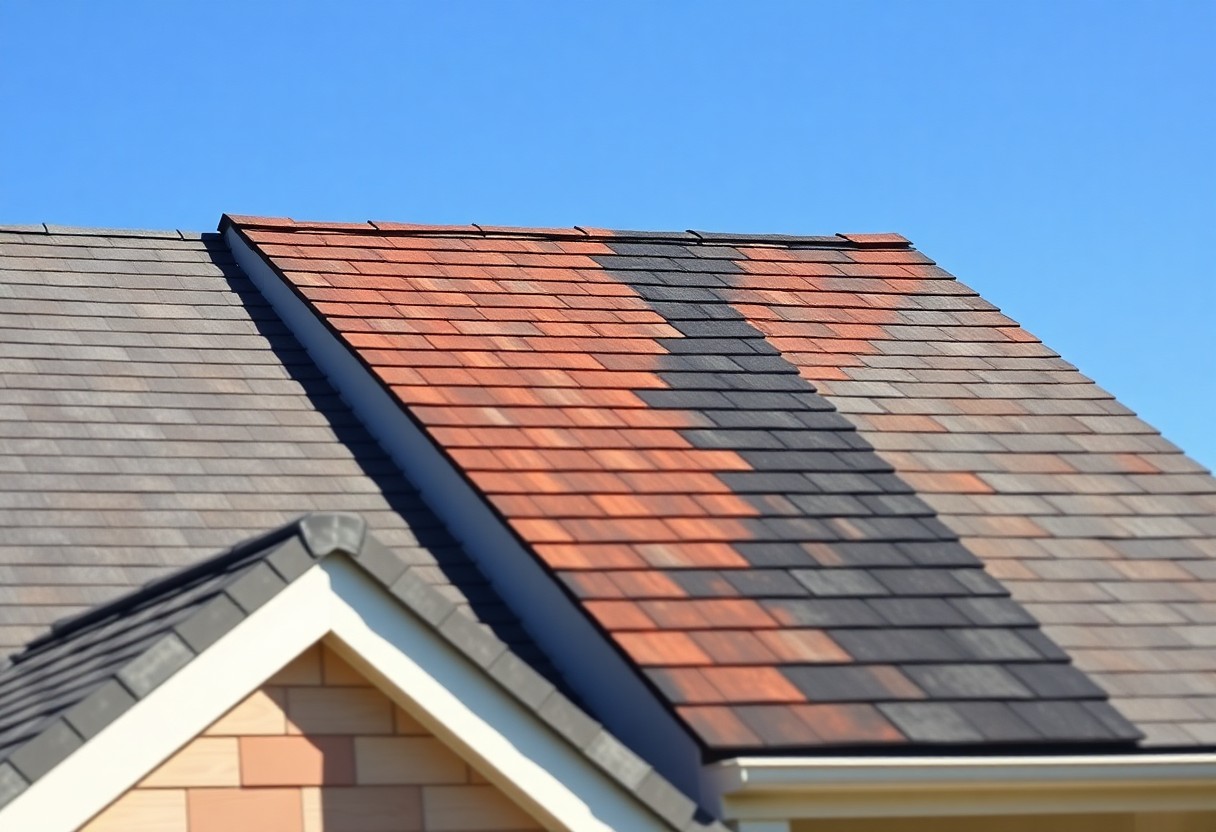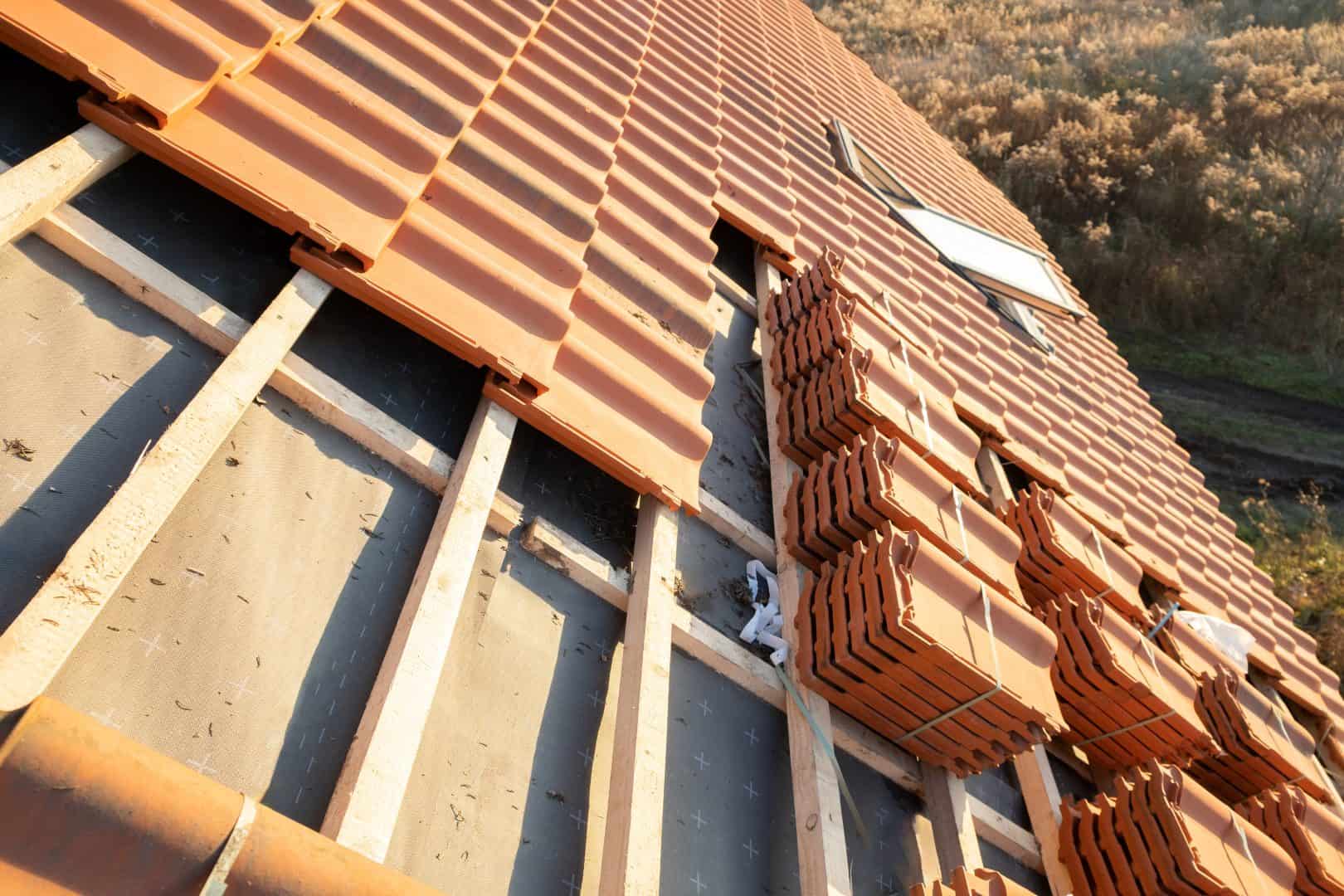What type of roofing material is best for my home?
Fill Out The Form And We'll Get Back To You

Roofing choices can significantly impact your home’s aesthetics, durability, and energy efficiency. With various materials available, it can be challenging to determine which option suits your needs best. Factors such as climate, budget, and architectural style play a vital role in your decision-making process. In this blog post, we will explore the advantages and disadvantages of the most popular roofing materials, helping you make an informed choice for your home.
Understanding Roofing Materials
For homeowners, selecting the right roofing material can be challenging. Understanding the various types available helps you make an informed decision that aligns with your preferences, budget, and the architectural style of your home. It’s imperative to consider factors such as durability, maintenance, and climate impact when evaluating different roofing solutions.
Types of Roofing Materials
For your project, here are some popular types of roofing materials:
- Asphalt Shingles
- Metal Roofing
- Clay Tiles
- Slate Roofing
- Wood Shingles
Thou will find each material has unique characteristics that suit varying needs.
| Material | Features |
|---|---|
| Asphalt Shingles | Cost-effective, easy to install |
| Metal Roofing | Durable, energy-efficient |
| Clay Tiles | Long-lasting, fire-resistant |
| Slate Roofing | Elegant appearance, highly durable |
| Wood Shingles | Natural look, good insulation |
Pros and Cons of Common Options
One of the best ways to narrow down your choices is to weigh the pros and cons of each roofing material:
Pros and Cons of Common Options
| Material | Pros |
|---|---|
| Asphalt Shingles | Affordable, variety of styles |
| Metal Roofing | Longevity, eco-friendly |
| Clay Tiles | Aesthetic appeal, low maintenance |
| Slate Roofing | Exceptional durability, elegant |
| Wood Shingles | Unique look, natural materials |
Further evaluation of the cons may also guide you in your decision:
Cons of Common Options
| Material | Cons |
|---|---|
| Asphalt Shingles | Short lifespan, less eco-friendly |
| Metal Roofing | Higher initial cost, noise in rain |
| Clay Tiles | Heavy, may require extra support |
| Slate Roofing | Expensive, requires specialist installation |
| Wood Shingles | Susceptible to rot, limited lifespan |
Factors to Consider When Choosing Roofing Material
There’s much to ponder when selecting the best roofing material for your home. Key factors to consider include your budget, aesthetic preferences, local building codes, and environmental impact. Additionally, take into account the maintenance requirements and energy efficiency of the materials. Make sure to explore the 12 Types of Roof Materials: Choosing the Best Option to find the ideal roofing solution for your needs. Thou should weigh all these considerations carefully.
Climate and Weather Conditions
One of the first aspects to assess is the climate and weather conditions in your area. This will influence not only the durability of your roofing material but also its performance. For instance, areas with heavy snowfall may require materials with strong load-bearing capacities, while regions prone to high winds might benefit from more secure installation methods.
Durability and Lifespan
Choosing durable roofing materials is vital to ensure longevity and reduce the need for frequent repairs. Consider materials that offer not only resistance to the elements but also a long lifespan, which can save you money in the long run. Your choice of roofing can significantly impact your overall home maintenance and structural integrity.
In addition, investing in high-quality materials can prevent costly repairs due to weather-related damage or deterioration over time. Different roofing options vary significantly in lifespan; for example, metal roofs can last 40 years or more, while asphalt shingles typically last 20 to 30 years. By selecting materials known for their durability, you enhance the value and safety of your property.
Energy Efficiency in Roofing
It is crucial to consider energy efficiency when choosing your roofing material. A well-insulated roof can significantly reduce your energy bills and maintain a comfortable temperature in your home. Discover more about the Types of Roofing | How Much is a New Roof in 2024? and find the best options suited for your needs.
Insulation Properties
An efficient roofing system provides excellent insulation properties to help keep your home warm in winter and cool in summer. Materials with high insulation values minimise heat transfer, allowing you to rely less on heating and cooling systems, ultimately saving you money on energy costs.
Reflective and Green Roofing Options
Across various regions, reflective and green roofing options have gained popularity for their energy-saving benefits. Reflective roofs can decrease the heat absorbed by your home, while green roofs provide insulation and improve air quality.
Hence, investing in reflective or green roofing options can yield significant long-term benefits for both your finances and the environment. Reflective roofs, often coated with special materials, reflect sunlight, reducing heat build-up and lowering cooling costs. Green roofs, characterised by vegetation and soil, not only insulate but also manage rainwater and increase biodiversity. These options contribute to a more sustainable living environment, making them an excellent choice for your home.
Aesthetic Considerations
Despite the functional aspects of roofing, aesthetic considerations play a significant role in your choice. Your roof contributes to the overall look of your home, enhancing its curb appeal and value. When identifying roofing materials, you may want to explore different styles that complement your architecture and reflect your personality. For more details on options, you can check out What Is the Best Type of Roof? (2023 Guide).
Style and Design
Design is an crucial part of your roofing choice, as it should complement the overall aesthetics of your home. Consider the architectural style of your house – whether it’s traditional, modern, or rustic – and choose roofing materials that enhance that design. From slate to metal, the style you pick can either stand out or seamlessly blend with your home’s appearance.
Color Choices
With the variety of roofing materials available, colour choices are also important in achieving your desired look. You have the freedom to choose colours that reflect your taste, whether you prefer classic tones or bold statements. Opting for colours that harmonise with your home’s exterior can create a cohesive appearance.
Also, consider the climate of your area when selecting the colour of your roof. Lighter colours can reflect heat, keeping your home cooler, while darker shades may absorb heat, which can be beneficial in colder climates. Ultimately, your choice should not only enhance your home’s aesthetic but also suit your regional environment.
Cost Analysis
Unlike some home improvement projects, selecting the right roofing material involves careful consideration of costs, both upfront and over time. The initial price can vary significantly depending on the material you choose, which influences your overall budget. Understanding these costs will help you make an informed decision that suits your financial situation while ensuring your home remains protected.
Initial Costs vs. Long-Term Investment
Analysis of your roofing options should take into account the initial costs compared to the long-term investment. While cheaper materials may seem attractive initially, they often require replacement or significant repairs sooner, resulting in higher costs down the line. In contrast, investing in higher-quality materials may incur a larger expense upfront but can lead to savings over the years through durability and lower maintenance needs.
Maintenance and Repair Expenses
An important factor to consider is the ongoing maintenance and repair expenses associated with your chosen roofing material. Some materials demand regular upkeep to maintain their lifespan and efficiency, while others may be more resilient and require less frequent intervention.
Also, the level of maintenance required can influence your long-term costs significantly. For instance, asphalt shingles might need regular inspections and replacements due to wear and tear, whereas metal or slate roofs may only need occasional cleaning and repairs. By evaluating the maintenance and repair needs of each option, you can better estimate the true cost of ownership over time, helping you to choose the best roofing solution for your home.
Environmental Impact
Now, when considering roofing materials, it’s crucial to assess their environmental impact. The production and disposal of roofing materials can contribute to greenhouse gas emissions and waste. Opting for eco-friendly solutions can not only benefit the planet but also increase your home’s energy efficiency. Your choice of roofing will play a significant role in reducing your overall carbon footprint and enhancing sustainable living practices.
Sustainable Roofing Options
Before you decide on roofing materials, explore sustainable options such as solar tiles, metal roofing, and reclaimed wood. These materials not only minimise environmental harm but can also enhance your home’s energy efficiency and aesthetic appeal. Investing in sustainable roofing can lead to long-term benefits, both ecologically and financially.
Recycling and Disposal
Across the roofing industry, recycling and proper disposal methods are becoming increasingly important. Many materials, such as asphalt shingles, metal, and tiles, can be salvaged and repurposed, thus diverting waste from landfills. Understanding your options for recycling will allow you to contribute positively to environmental conservation.
It is advisable to check with local recycling facilities or roofing contractors about available programmes in your area. Many roofing companies now offer recycling services, allowing you to dispose of your old materials sustainably. By prioritising recycling and responsible disposal, you can significantly reduce the environmental footprint of your roofing project, ensuring that you make a positive contribution to the planet while upgrading your home.
Final Words
To wrap up, selecting the best roofing material for your home depends on various factors such as climate, architectural style, and your budget. You should consider options like asphalt shingles for affordability, metal for durability, or slate for elegance. Take into account the lifespan and maintenance requirements of each material to ensure it suits your long-term needs. By assessing these elements carefully, you can make an informed decision that enhances both the aesthetic and functionality of your home.
FAQ
Q: What factors should I consider when choosing roofing materials for my home?
A: When opting for roofing materials, consider factors such as the climate in your area, the architectural style of your home, budget, and the lifespan of the roofing material. For example, if you live in a region prone to heavy rainfall, materials like asphalt shingles or metal roofing may offer better water resistance. In contrast, if your home has a traditional look, slate or tile might be more visually appealing. Additionally, consider the installation and maintenance costs associated with each material, as these can vary significantly.
Q: Are there eco-friendly roofing options available?
A: Yes, there are several eco-friendly roofing materials that you can consider. Options such as environmentally friendly shingles made from recycled materials, metal roofs that are highly durable and recyclable, and green roofs that incorporate vegetation can significantly reduce your home’s carbon footprint. These materials not only help the environment but can also improve energy efficiency, as they may provide better insulation and reduce cooling costs during hot weather.
Q: How long can I expect different roofing materials to last?
A: The lifespan of roofing materials can vary widely. For instance, asphalt shingles typically last around 15 to 30 years, depending on quality and installation. Metal roofs can last between 40 to 70 years with proper maintenance, while slate and tile roofs can exceed 100 years. It’s important to weigh the initial cost against the longevity of the material, as investing in longer-lasting options may save money in the long run due to reduced replacement and maintenance needs.
Re-Roof of Bungalow
The guys made a fantastic job of replacing the roof on our bunglaow. They were fasy, relaible and excellent value for money.
Chimney Removal
We employed Wrights Roofs to take down our very old chimney – tht had seen better days. They carefully removed and made good the area where the chimney was. Really impressed.
New Roof
We had an extension built and Wrights came and put a new roof on. They were brilliant, no fuss, great value for money. Thank you.
Roofs, Flat Roofs Chimneys and Solar Panels
If you need roof work on your home, please complete the form or call us today.

